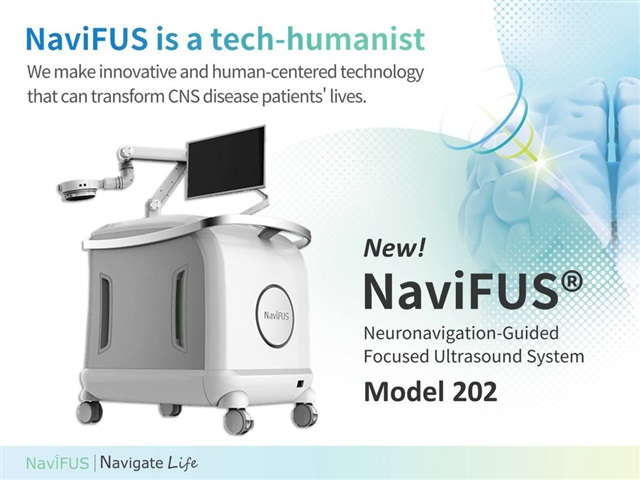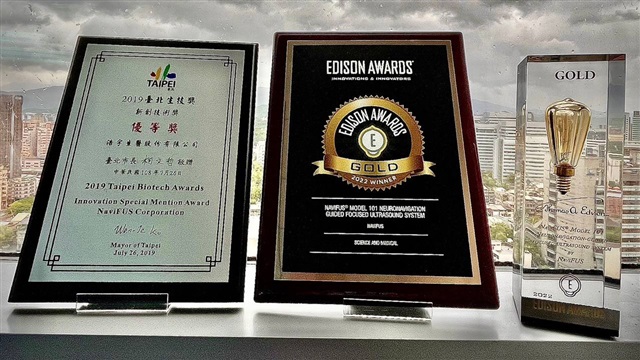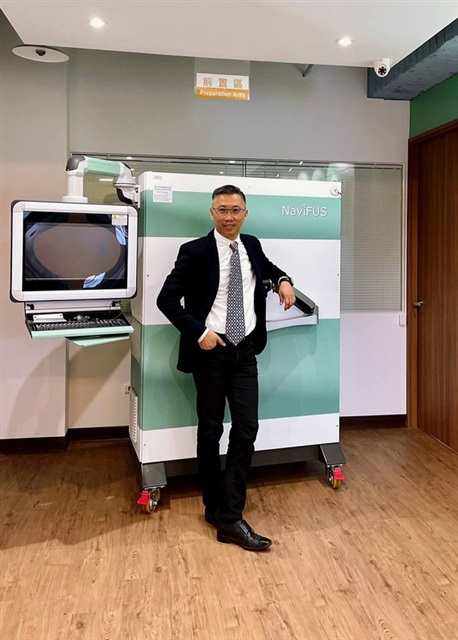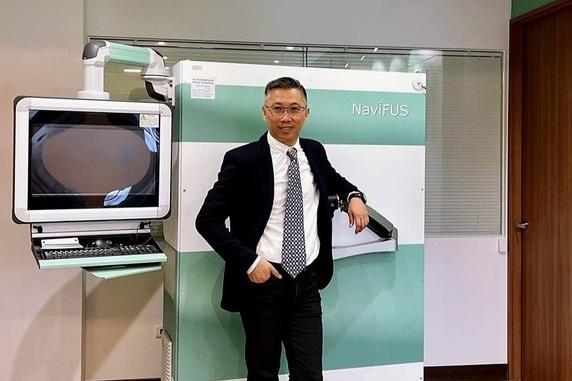The NaviFUS System developed by NaviFUS Corp. has shown great potential to treat recurrent glioblastoma multiforme and epilepsy, which both lack effective therapies. There are approximately 10,000 brain tumor patients in the United States, and their predicted survival is no more than 12-18 months. There are also approximately 200,000 epilepsy patients in Taiwan, in which one third cannot be treated with standard medication. Applications of ultrasound have grown beyond traditional diagnostic uses, making it an intriguing technology in the medical treatments space; for example, ultrasound in aesthetic medicine has matured into a Red Ocean market, while recent studies in clinical applications of focused ultrasound in brain diseases suggest a nascent Blue Ocean market with great potential. NaviFUS Corp. will begin a Phase III clinical trial in Taiwan and Phase II clinical trial in the United States to treat brain cancer and epilepsy, and NaviFUS Corp. will also seek patent sublicensing and joint development agreements with major companies worldwide.
Focused Ultrasound (FUS) Opens the Blood-Brain Barrier Non-Invasively and can Regulate Epileptic Seizures
NaviFUS Corp. was founded by Professor Hao-Li Liu at the Department of Electrical Engineering, National Taiwan University. The company then recruited Arthur Lung and Ting-Kuang Chang to form the Executive team that successfully implemented NaviFUS' core FUS technologies. This included using optical tracking neuro navigation to precisely target parts of the brain that need treatment, using FUS to temporarily open the BBB ofthe targeted region non-invasively to increase drug delivery to that area, and using FUS to non-invasively inhibit electrical signals in the brain in epilepsy patients which has shown effects of reduced epileptic seizures.
Arthur Lung, CEO of NaviFUS Corp., stated, "It was hard to deliver large molecule drugs into the brain for treatment in the past, and treatment was often ineffective or impossible as a result. However, FUS can safely stimulate microbubbles to oscillate in blood vessels, and the resulting cavitation squeezes endothelial cells in the blood vessels to allow drugs – protein drugs, antibodies, and genes or cells for treatment – to pass through and be directly delivered to the part of the brain that needs treatment.

The NaviFUS system is used to treat common recurrent glioblastoma multiforme and epilepsy
Focused Ultrasound Phase II Clinical Trials Results Suggest FUS Treatment Can Potentially Extend Progression-Free Survival of Brain Cancer Patients and Inhibit Epileptic Seizures
Arthur Lung explained that among the nearly 310,000 brain cancer patients worldwide, over 50% have a primary malignant brain tumor, and the majority will not live past 12 months. Results of a Phase II clinical trial for the NaviFUS System that was recently completed by NaviFUS Corp. were positive, and the primary outcome showed an improved proportion of patients with 6 months Progression-Free Survival (PFS-6) in comparison to historical data of the standard treatment alone. This suggested that the NaviFUSSystem combined with Avastin improved the efficacy of the drug treatment.
Furthermore, the United States has 3.4 million epilepsy patients while Taiwan has 200,000, in which one third are drug-resistant, so there is a large population of patients suffering from this unmet clinical need. Countries around the world currently all use implanted electrode wires that emit tiny electric waves to inhibit epilepsy. The cost of the implant and surgery is over USD$30,000, and the cost of replacing batteries every two to three years is approximately USD$15,000. If NaviFUS Corp. can use FUS to achieve similar therapeutic effects, the cost of the treatment is estimated at only 1/5 the cost of an implant, and it can also bypass surgery that involves anesthesia and blood transfusion.

NaviFUS Corp. was recognized with the 2019 Taipei Biotech Awards and 2022 Edison Awards
Seeking International Cooperation with Pharmaceuticals Companies and Semiconductors Companies
There are only two companies in the world currently developing Transcranial focused ultrasound systems, one is NaviFUS Corp. and the other is Insightec, a medical device company in Israel. Arthur Lung pointed out that NaviFUS Corp. uses optical neuro navigation tracking for its device's guidance while Insightec uses intraoperative MRI. The NaviFUS System's FUS treatment is designed to reduce the time required, while offering flexibility in being able to perform the non-invasive treatment in the outpatientclinic.
The NaviFUS System developed by NaviFUS Corp. was a winner of the TIE Award during Taiwan Innotech Expo this year. The device plans to complete a multi-national Phase III clinical trial, so the company is seeking to cooperate with major pharmaceuticals companies worldwide in testing their drugs or acquiring funding to obtain a sales license from the Ministry of Health and Welfare. Furthermore, the equipment needs specializedsemiconductor components and microprocessors to generate and receive ultrasound. Hence, the company is searching for industry partnersto engage in joint R&D to make the equipment smaller, so that patients will not need to go to a hospital and can use the equipment in a clinic or even at home.
The NaviFUS System to Obtain Marketing License in Taiwan as Soon as 2027
The NaviFUS System's mechanism of action involves a unique combination of optical tracking guidance and FUS stimulation of microbubbles, so it is collaborating with German medtechcompany Brainlab and Italian imaging company Bracco, which manufactures the microbubbles. The equipment and clinical trial results will be displayed in the Future Tech Pavilion during the Taiwan Innotech Expo (TIE) this year. Arthur Lung pointed out that the company is about to start a Phase III clinical trial in Taiwan, and aims to obtain TFDA certification in 2027. The company will begin Phase II clinical trials in the United States this year and in Europe next year.
Arthur Lung stressed that once the system is approved, NaviFUSCorp. will handle sales in Taiwan and is currently seeking strategic partners in the United States, Europe, South Korea, and Japan using a royalties and profit-sharing business model for sales. Brain diseases all face the same challenge of safely delivering large molecule drugs past the BBB. Hence, after the clinical trials for recurrent glioblastoma and epilepsy are completed and the system is successfully licensed and approved for commercialization, NaviFUS Corp. will begin clinical development for Parkinson's disease, Alzheimer's disease, and depression in the next stage.

CEO Arthur Lung indicated that NaviFUS Corp. will begin development for Parkinson's disease, Alzheimer's disease, and depression in the next stage




